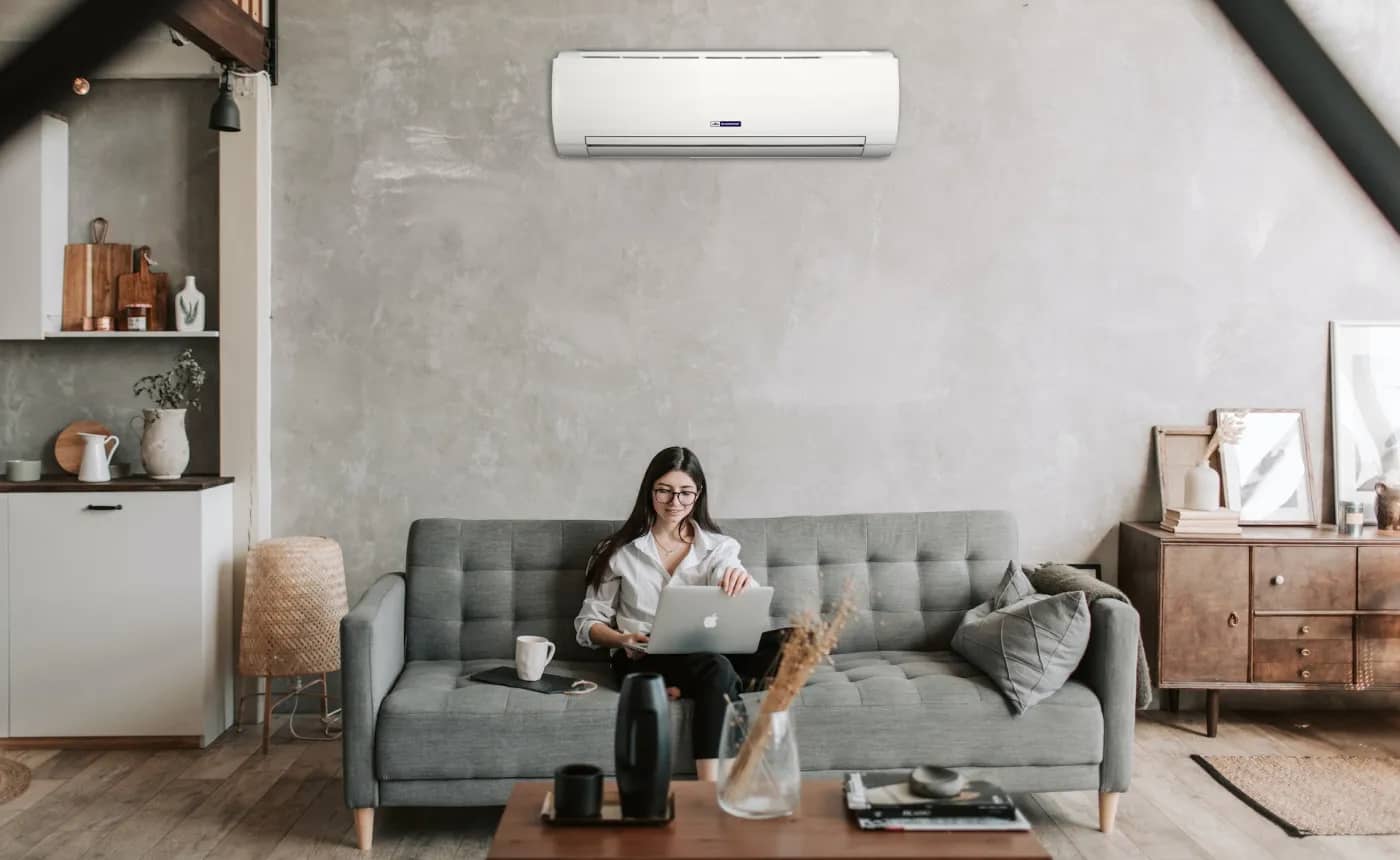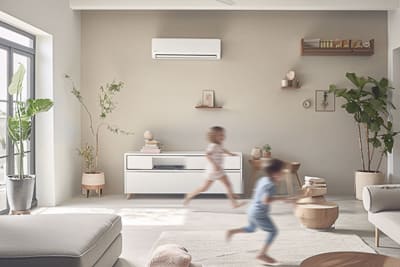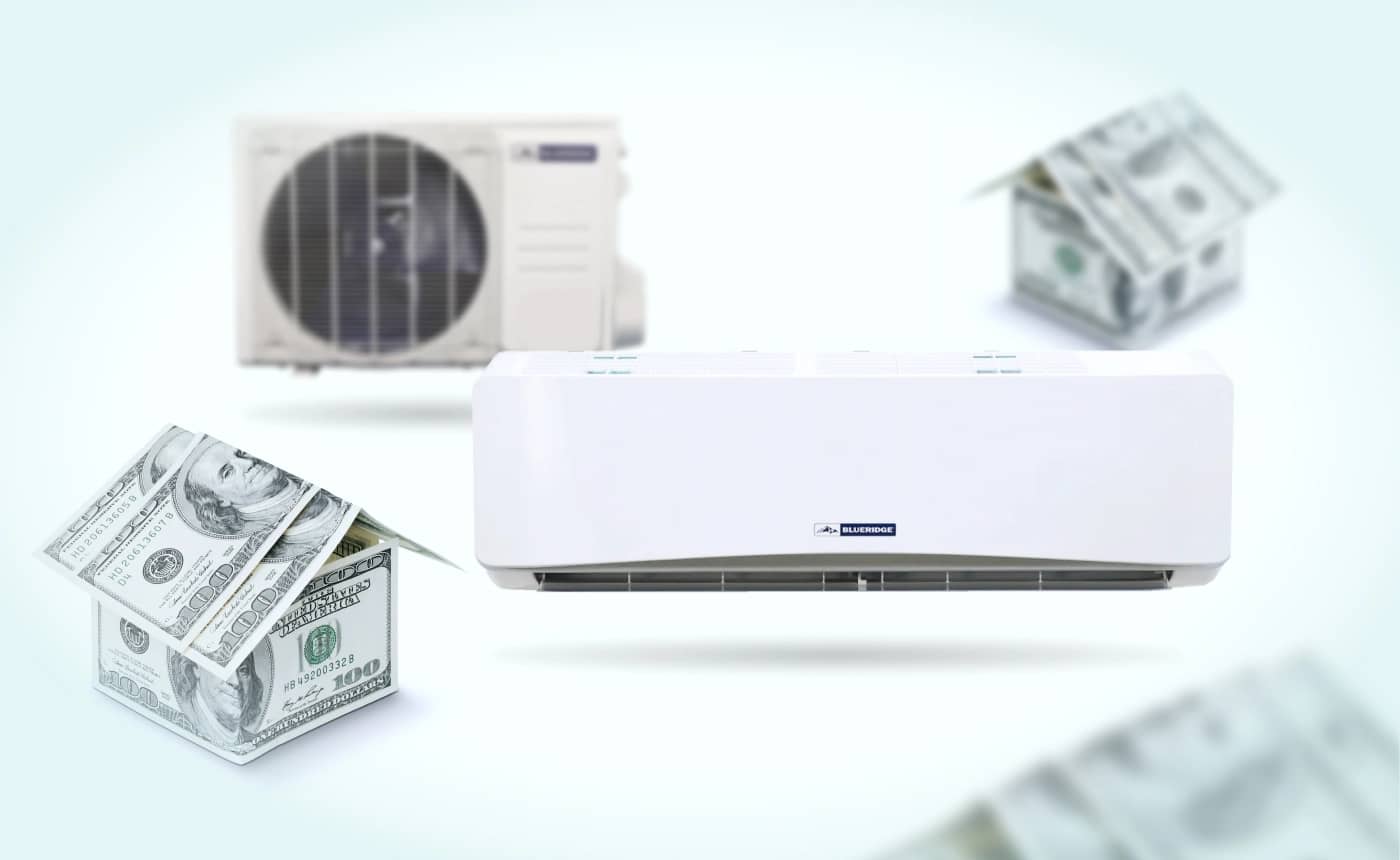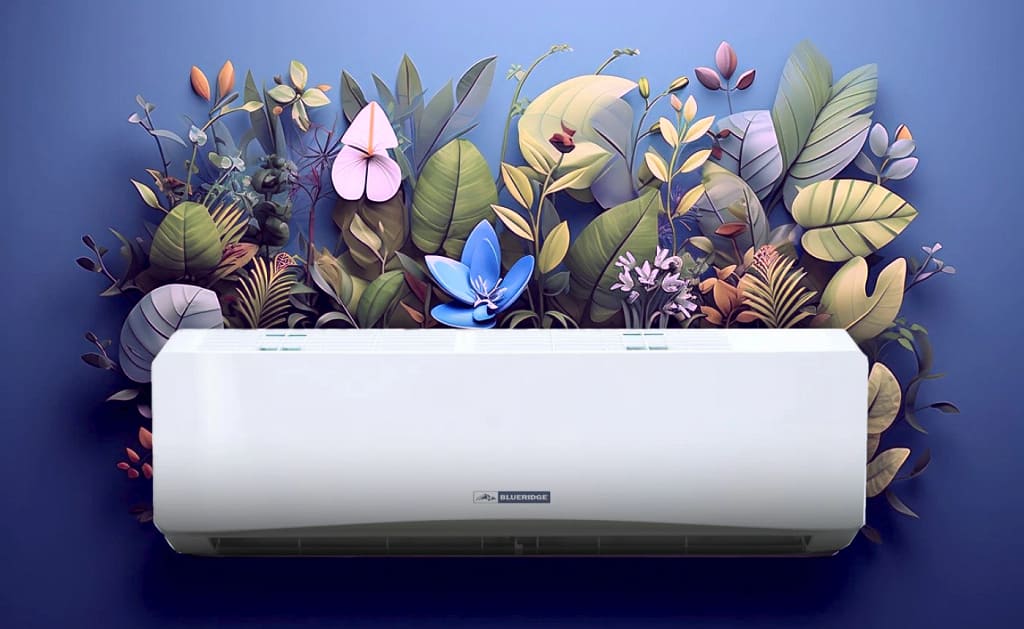
How many times a day does someone in your home complain about a certain space being “too hot” or “too cold”?
How often does your thermostat setting end up causing an argument?
And how frequently do you find yourself frustrated that your monthly heating and/or air conditioning bill is always higher than you thought it was going to be, despite all your attempts to keep it within your budgeted amount?
If any of these scenarios sound like your household or living situation, then it may be time to consider how the best ductless mini-split air conditioner can make all the difference in bringing your family’s comfort level up and your costs down.
KEY TAKEAWAYS
- Mini-split AC systems are an efficient and versatile solution to the ongoing struggle of maintaining a comfortable indoor environment while keeping energy costs in check.
- With components like outdoor condensers and indoor air handlers, these systems operate on a refrigerant cycle that delivers personalized climate control to different zones within a home or building.
- While mini-splits are great alternatives to traditional HVAC systems, knowing what unit you need is a big part of your decision.
- Look for the best mini-splits with high SEER and HSPF ratings to ensure optimal cooling and heating efficiency and cost savings.
- By understanding the types, advantages, installation process, and other factors influencing your choice, you can select the best ductless mini-split system that aligns with your comfort needs and budget.
As advancements in heating and cooling systems continue to grow, the interest in ductless air conditioners continues to grow as well.
And for good reason.

Ductless mini-split systems have rapidly moved to the forefront of efficient energy consumption and customizable climate control solutions.
From their compact design to their flexibility in installation, a ductless mini-split system can prove to be a perfect fit for both residential and commercial spaces.
What are Ductless Mini-Split Systems?
Unlike traditional HVAC systems, a ductless mini-split system is a revolutionary heating and cooling solution designed to provide personalized comfort in residential and commercial spaces without the need for traditional ductwork.
Consisting of an outdoor unit connected to one or more indoor air handling units, these systems use refrigerant lines to transfer heat or cool air directly to the desired areas. Each indoor unit can be individually controlled, allowing for zoned temperature settings and enhanced energy efficiency.

Unlike a traditional HVAC system – which relies on a network of ducts to distribute conditioned air – mini-splits operate with a ductless design. This feature brings a multitude of benefits that have propelled mini-splits into the forefront of modern climate control solutions.
Ductless mini-splits are becoming increasingly popular due to their energy efficiency, versatility, and ease of installation. But understanding how they work and how they heat and cool your home is essential information before you can make a final decision.
Understanding How the Ductless Mini-Split AC Systems Work
In a ductless mini-split system, air is easily moved and distributed throughout a house or business by using the combination of an outdoor unit (also known as the condenser or heat pump) and one or more indoor units (also known as the air handlers).
Here’s how the process works:
Outdoor Unit Operation: The outdoor unit of a ductless mini-split air conditioner houses the compressor and condenser, and it’s responsible for either absorbing heat from the air (when in cooling mode) or releasing heat (when in heating mode).
The outdoor unit then transforms this heat and transfers it to the indoor units through the refrigerant lines.
Refrigerant Lines: Refrigerant lines connect the outdoor unit to the indoor units. These lines transport the heated or cooled refrigerant between the two units, facilitating the transfer of heat.
The refrigerant undergoes phase changes as it absorbs or releases heat, allowing it to transfer thermal energy effectively.
Indoor Unit Operation: Each indoor unit, or air handler, is installed in a specific zone or room that requires heating or cooling. The indoor units are equipped with a fan and a heat exchanger coil. When the refrigerant reaches the indoor unit, it releases the absorbed or generated heat.
The indoor unit’s fan blows air across the heating coil, allowing the air to either be heated or cooled, depending on the operating mode.
Air Circulation: Inside each mini-split indoor unit (or air handler) is a fan that creates airflow across the heat exchanger coil. As the air handler draws in indoor air, it passes over the coil where it is heated or cooled by the refrigerant. The conditioned air is then blown back into the room, creating a consistent and comfortable indoor environment.
Zoning Capability: One of the most unique advantages of a ductless mini-split system is its zoning capability. Each indoor unit can be controlled independently, allowing different areas or rooms to have their own temperature settings.
With this type of customized air conditioning, you can avoid heating or cooling unoccupied spaces, all while saving energy, money, and improving overall comfort.
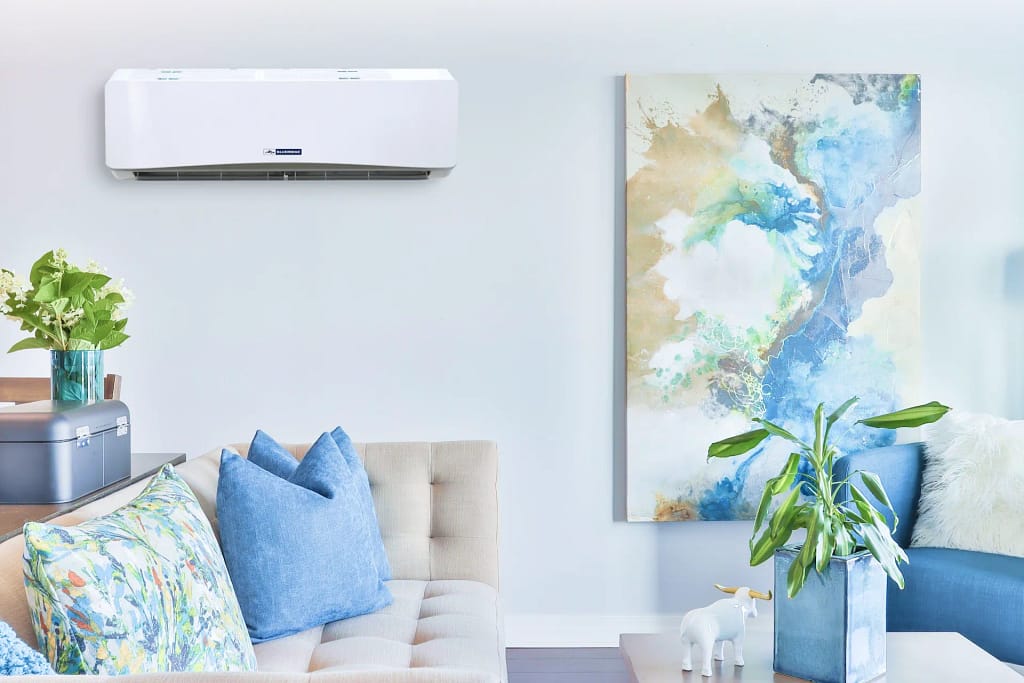
The Different Types of Min-Split AC Systems
Though there are a variety of similarities between the different types of ductless mini-split systems, there are also a fair number of differences that are worth knowing about as well.
Here is a comprehensive list of the various types of ductless mini-split systems you may encounter and why each is ideal in certain situations.

Single Zone Mini-Split Systems:
A single zone mini-split system is designed to cool or heat a single room or small space.
It consists of one outdoor condenser unit connected to one indoor air handling unit. This type of system offers personalized temperature control and energy efficiency for a specific area, making it a suitable choice for bedrooms, home offices, or small apartments.

Multi Zone Mini-Split Systems:
A multi zone mini-split system is designed to provide cooling and heating to multiple areas or zones within a building.
It includes one outdoor condenser unit and several indoor air handlers, each serving different zones. You can choose how many zones you want to control for your space, from one to a 4 zone mini-split system or even more. This setup offers the flexibility to independently control the climate in various rooms, making it ideal for homes with varying cooling or heating needs in different areas.

Ceiling Cassette Mini-Split Systems:
Ceiling cassette mini-split systems are installed within the ceiling, providing 360-degree airflow distribution throughout a room.
These systems are often used in larger spaces or commercial settings where even temperature distribution is important. The unit’s grille is flush with the ceiling, offering a clean and unobtrusive appearance while effectively cooling or heating the room.

Wall-Mounted Mini-Split Systems:
Wall-mounted units are the most common type of mini-split systems.
They are installed high on the wall and provide efficient cooling and heating while saving valuable floor space. This type of system is suitable for bedrooms, living rooms, and offices, offering a sleek and unobtrusive design that blends seamlessly with the room’s decor.
Again, deciding what is the best ductless mini-split air conditioning system you need will be based on a number of factors, from your budget to your building’s design.
Understanding Capacity in Ductless Mini-Split AC Systems
When choosing the best mini-split air conditioner for your home or commercial space, understanding the system’s capacity is crucial.
Capacity refers to the system’s heating or cooling power, typically measured in British thermal units (BTU) or tons.
Let’s look at some of the key factors that influence mini-split system capacity and how to determine the appropriate capacity for your needs.
Factors Affecting Mini-Split System Capacity
Several factors play a pivotal role in determining the capacity of a mini-split heating and cooling system.
- Room Size: One of the most fundamental considerations is the size of the space you intend to heat or cool. Larger rooms or areas will require a mini-split system with higher capacity to maintain the desired temperature effectively.
- Climate Conditions: The local climate is another critical factor. Suppose you reside in an area with extreme temperature variations, such as sweltering summers or bitterly cold winters. In that case, you’ll need a mini-split system with a higher capacity to handle the temperature extremes efficiently.
- Insulation and Construction: The level of insulation in your building and its construction materials can impact the capacity needed. Well-insulated spaces typically require less heating or cooling capacity, whereas poorly insulated areas demand more.
- Ceiling Height: The height of the room’s ceiling can also influence capacity requirements. Taller ceilings mean more air needs to be heated or cooled.

How to Calculate the Right Capacity for Ductless Mini-Split AC Systems
To determine the appropriate capacity for your mini-split system, you can easily follow these steps:
- Measure the Room: Measure the length, width, and height of the room or area you want to condition. This calculation provides the room’s cubic footage.
- Consider Insulation: Assess the quality of insulation and construction materials. Well-insulated spaces may require around 25-30 BTUs per square foot, while poorly insulated areas may need 40 BTUs or more.
- Account for Climate: Take into account the local climate and temperature extremes. Consult your region’s climate data to estimate the heating or cooling load required.
- Use an Online Calculator: Numerous online calculators are available to help you determine the ideal capacity based on your specific requirements. Alpine’s advanced System Selector factors in room size, insulation quality, and climate conditions in its calculation.
How to Select the Best Ductless Mini-Split AC System for You
Choosing the best mini-split air conditioner for your space doesn’t have to be complicated.
But you will have to make plenty of decisions before settling on your final choice.
But by following the step-by-step guidelines outlined below, you can decide the type, size, and style of the mini-split that will be ideal for you.
1. Assess Your Cooling and Heating Needs
You’ll first want to get a good idea of your heating and cooling needs.
Will you be trying to heat and cool an entire home or office building, or do you need a mini-split for a specific area, like a converted garage or a new addition?
Knowing what you expect from your new ductless mini-split system will go a long way in helping you begin to narrow down what you should be looking for when it comes to the type, size, and style of your ductless mini-split.
2. Understand BTU Requirements
Once you know how a mini-split system can fit your needs, you can determine your required system capacity.
An HVAC system’s capacity is rated in BTU, which stands for British thermal units.
The dictionary defines a British thermal unit as the amount of heat energy required to raise the temperature of one pound of water by one degree Fahrenheit.

When applied to the context of HVAC systems, British thermal units measure the amount of heat energy that an air conditioning system can remove from indoor air to cool the temperature of a space.
Likewise, a heat pump uses this same process but in reverse to provide heating. In the winter, a mini-split heat pump removes heat from outdoor air (even in frigid conditions) and releases the warm air indoors.

Higher BTU ratings indicate greater heating or cooling capacity for any HVAC system.
Depending on the size of the space that you want to air condition, the required number of BTU will vary.

Smaller rooms or zones generally need mini-split systems with fewer BTU, while larger areas demand more to adequately cool or heat the space.
Factors like room size, insulation quality, local climate conditions, and the number of occupants influence the capacity needed for an efficient and comfortable environment.
Consulting with an HVAC professional is a good idea for precise calculations and personalized recommendations. For further information on accurately calculating capacity, see our article, Mastering the Mini-Split Size Calculator in Alpine’s Learning Center.
3. Choose a Single-Zone or a Multi-Zone System
Another significant factor in your overall ductless mini-split decision is whether you need a single-zone system or are looking for a larger mini-split air conditioner to serve more rooms (or zones) within a home or office building.

A single-zone mini-split is designed to heat and cool one room or area. In contrast, a multi-zone system will heat and cool multiple rooms or zones.
In a single-zone system, one indoor unit connects to one outdoor unit, providing climate control for a specific space.
On the other hand, a multi-zone mini-split can have several indoor units connected to the same outdoor unit. A multi-zone system allows for individual temperature control in each room or zone.
Multi-zone systems offer greater flexibility and are ideal for larger homes or buildings where different areas have varying heating and cooling needs.
However, single-zone systems are more straightforward and cost-effective for smaller spaces with uniform climate requirements.

4. Consider Energy Efficiency
Most people considering installing a mini-split system in their home or workplace are motivated by increasing their energy efficiency to cut costs and reduce their carbon footprint.
But remember this: not all ductless mini-split AC systems are created equal, and not all are as energy efficient as you may think.
When researching mini-split systems, make sure to look for units that boast a high SEER rating.
SEER stands for Seasonal Energy Efficiency Ratio and is a crucial rating used to assess the cooling performance of air conditioning systems.
SEER measures how efficiently a cooling system can operate throughout the season.

A higher SEER rating signifies greater energy efficiency, implying that the system can provide the same cooling output as a counterpart while using less electricity.
Mini-split systems typically have SEER ratings that range from 16 to 30 or more, though the specific SEER rating of a mini-split system can vary depending on the brand, model, and capacity.
That said, compared to traditional central forced air systems, ductless mini-split systems carry a higher SEER rating. Even the least efficient mini-split will be more efficient than conventional air conditioners of the past.
5. Choose Your Indoor Unit(s)
When selecting a mini-split indoor air handling unit for your home, work, or other space, it’s crucial to consider the various types available, including high-wall mounted, low-wall mounted, and ceiling cassette units.
All indoor air handler types feature unique advantages and placement options.
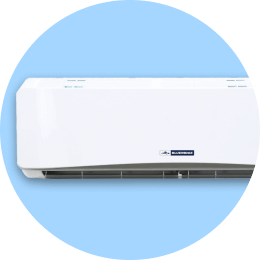
High Wall-Mounted Units: These are the most common and versatile mini-split units. They are typically installed at a higher position on the wall, ensuring an even distribution of conditioned air throughout the room. High-wall units are suitable for bedrooms, living rooms, and home offices. Their placement allows for easy airflow and efficient cooling or heating. These units are visually unobtrusive and can seamlessly blend with most room aesthetics.
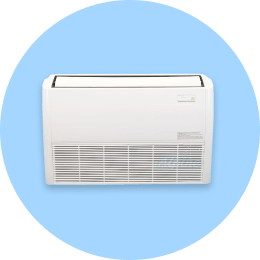
Low Wall-Mounted Units: These mini-splits are installed on the wall, at or near floor level. They are excellent for spaces with limited wall space or specific heating and cooling needs. Low-wall units are typically installed in basements, offices, or rooms with large windows where conventional high-wall units are not feasible.
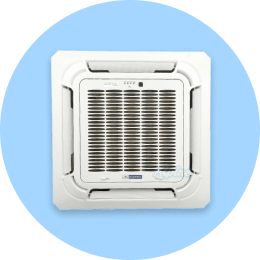
Ceiling Cassette Units: Ceiling cassette mini-splits are integrated into the ceiling, providing a discreet and space-saving solution. They are especially beneficial in areas with limited wall space or where aesthetics are a priority. Ceiling cassette units distribute conditioned air evenly in a 360-degree pattern, making them ideal for open-concept living areas, restaurants, and commercial spaces.
The choice between these mini-split types depends on several factors, including what type of room layout you have available, what your wall or ceiling space looks like, and what your specific heating and cooling requirements may be.
Additionally, the aesthetics of your space and personal preferences play a role in determining which unit type is the best fit.
It’s advisable to consult with a qualified HVAC professional before you buy to ensure you’ve selected a system to fit your needs.

HVAC professionals can assess your space, discuss your needs, and recommend the most suitable mini-split unit type and placement for optimal comfort and efficiency.
Choosing a suitable mini-split unit will enhance indoor climate control while seamlessly integrating with your space’s design.
6. Think About Your Budget
Knowing your budget for both the purchase and the installation of a mini-split system will make a big difference in what you choose and your long-term satisfaction with your unit.
Like any significant investment, ductless mini-split AC systems require periodic costs, even after the initial bill is paid.
Budget considerations will be paramount, from selecting the unit to the mini-split installation and ongoing operation.
- Upfront Costs: Your budget will significantly influence your choice of a mini-split system. These systems come in various sizes and efficiencies, and their prices can vary accordingly.
While it might be tempting to opt for the most budget-friendly option, balancing initial costs with long-term energy savings and performance is essential.
Remember that higher-efficiency units often have a higher upfront cost but can yield substantial savings over time. - Installation Expenses: The cost of installing a ductless mini-split system is another thing to consider regarding your budget.
Do you plan to do the majority of the installation process yourself? Or would you prefer to have an HVAC expert involved in most of the work?
While professional installation ensures that your mini-split system functions optimally and efficiently, many homeowners enjoy do-it-yourself projects.
The overall installation cost can vary greatly depending on the type and size of your mini-split system and your home’s layout.
Consider different installation options when planning your budget since a DIY install will likely lower installation costs substantially over a professional installation.

Understanding these budget considerations will help you select the right mini-split system initially and ensure that you can enjoy efficient and cost-effective heating and cooling for years to come. Balancing upfront expenses and long-term savings is essential when making decisions about your mini-split system.
The Advantages of a Ductless Mini-Split System
Ductless mini-split systems offer a wide range of compelling advantages that set them apart from traditional HVAC systems.
These features contribute to their growing popularity as efficient and customizable climate control solutions.

Energy Efficiency and Reduced Utility Bills
One of the standout benefits of ductless mini-splits is their energy efficiency.
By eliminating the energy losses associated with duct leaks and inefficient distribution, these systems can significantly reduce utility bills.
Not only that, but many mini-split models are equipped with advanced technologies, such as the inverter-driven compressor, which adjusts the output to match the precise heating or cooling demands, helping you save on your utility bills.

Zoning and Personalized Comfort
Mini-splits excel as the HVAC industry leader when it comes to providing personalized heated or cooled air through a variety of zoning choices.
Unlike traditional HVAC systems whic provide uniform heating or cooling to an entire house or building, a mini-split system’s zoning feature lets you customize the climate of specific rooms or zones according to each occupant’s needs or preferences. This means you can adjust the temperature in one zone without affecting the temperature in another.
You have total control over the amount of zones in your space, from a single zone all the way to 5 zone mini-split systems. These settings can be done on the indoor unit or with a remote control, thus eliminating the need for unoccupied spaces to be air conditioned.

Flexible Installation Options
Ductless mini-split systems offer remarkable flexibility when it comes to installation.
The absence of ductwork simplifies the process, and indoor units can be mounted on walls, ceilings, or even placed as floor-standing units.
This adaptability ensures optimal airflow and comfort while allowing for creative placement of the unit to suit the room’s layout and your personal aesthetics.

Minimal Energy Loss Due to Ducts
Traditional HVAC systems rely on ductwork to distribute conditioned air throughout a home or a building.
Not only can ductwork be expensive and cumbersome to install, but ducts often suffer from leaks, insufficient insulation, and other inefficiencies that result in energy loss.
Ductless mini-split systems bypass this issue entirely, ensuring that the conditioned air reaches its destination without unnecessary energy waste and extra work or maintenance on your part.

Quiet Operation
A good cooling and heating system should not only be able to keep the temperature in a home or office comfortable, but it should also be able to keep the occupants of the space comfortable in other ways as well.
One of the best benefits of a ductless mini-split system is how it’s been designed with quiet operation in mind — a feature that greatly enhances a person’s overall enjoyment whether they are working, sleeping or entertaining in a particular room or space.
The indoor units are engineered to operate with minimal noise, providing a peaceful environment without the typical disturbances associated with traditional HVAC systems.
The outdoor units are designed to be quieter than the typical HVAC outdoor condenser unit as well.

Enhanced Indoor Air Quality
Indoor air quality has long been recognized as a vital component of any heating and cooling system, and for good reason.
We spend a significant portion of our lives indoors, and the quality of the air we breathe has a direct impact on our health, comfort, and overall well-being.
One of the standout features of ductless mini-splits is their ability to enhance our indoor air quality through advanced filtration and purification technologies. Equipped with built-in filters that capture dust, allergens, and other contaminants in your indoor air, a high-quality ductless mini-split will keep your indoor air cleaner and healthier – a benefit for all of us, but particularly for those individuals with allergies, respiratory issues, or compromised immune systems.

Great for Home Additions or Converted Spaces
Finally, if you’re adding an extension on to your house, a ductless air conditioning system is an excellent way to heat and cool the space without having to mess with your home’s current ductwork.
It can be expensive (and time-consuming!) to add additional ductwork to your home’s existing ductwork network when you add an additional room to your home.
This is where a ductless mini-split system can really come in handy. All you need is a small hole in the wall to connect the indoor and outdoor units, making them much easier and less invasive to install than trying to involve your existing ductwork.
This means you won’t have to worry about tearing apart ceilings, ripping up floors, or compromising your home’s design to attain better heating and cooling.
While many homeowners and business owners may feel that a traditional HVAC system is going to be the best option for heating and cooling their indoor space, ductless mini-splits are quickly proving that this is no longer the case.
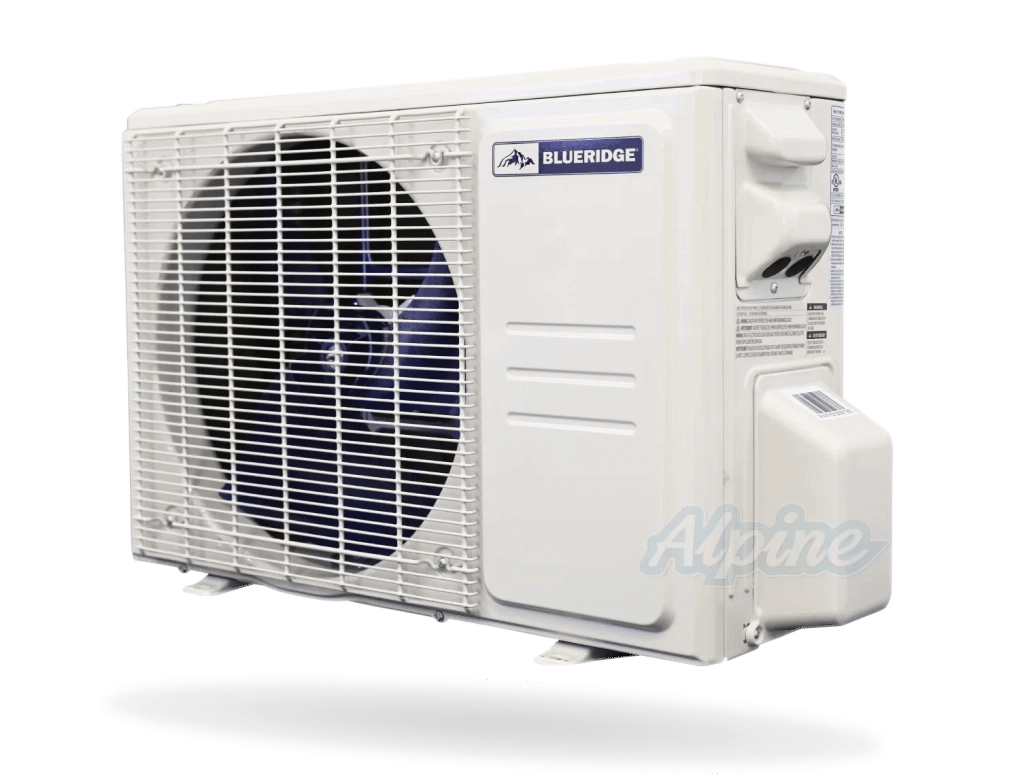
With their energy-efficient operation, precise zoning capabilities, flexible installation options, minimal energy loss, quiet operation, and enhanced indoor air quality, mini-splits provide a new and improved alternative to the heating and cooling systems of the past.
The ability to customize temperatures for individual rooms, the absence of energy-draining ducts, and the advanced air filtration systems make it clear that a ductless mini-split is the optimal choice for anyone who wants to save money, increase their comfort level, and be kind to the environment in the process.

When You’re Ready to Invest…Choose the Best Mini-Split Air Conditioner for Your Home
If you are ready to make the decision to invest in a mini-split system for your home or business, Alpine Home Air Products can help you refine your choices and find the best ductless mini-split air conditioning system that is going to work for you.

Alpine Home Air Products is the exclusive distributor of the Blueridge Mini-Split System which has emerged as the beacon of excellence in the HVAC world.
Crafted to redefine the way you experience heating and cooling, Blueridge Mini-Splits epitomize cutting-edge technology, advanced engineering, and an unwavering commitment to your comfort.
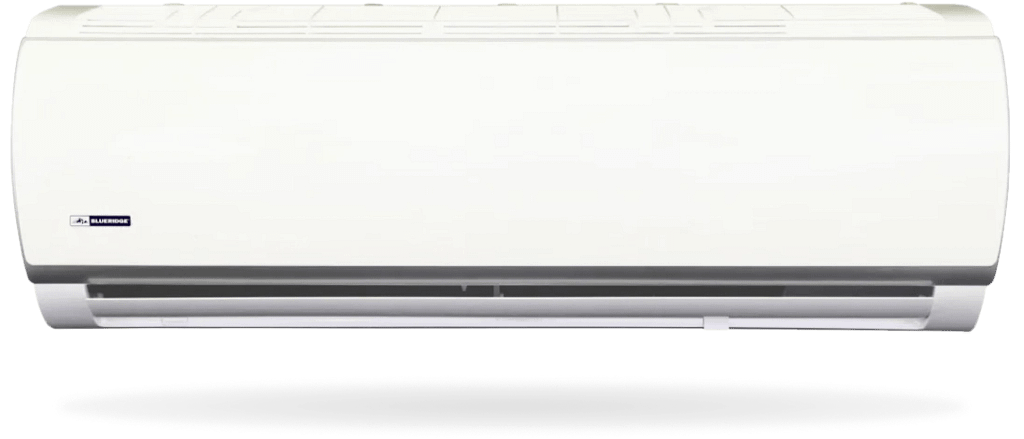
From options like single zone mini-splits to multi zone systems, Blueridge offers solutions tailored to every space imaginable.
And – with wholesale pricing, fast and free shipping, expert HVAC professionals, and a robust warranty guarantee – Alpine Home is clearly dedicated to your satisfaction and continued support.
Are you ready to learn more? Then take a moment and reach out to one of our helpful team members today. Alpine Home Air Products is ready to bring your heating and cooling needs to the next level of comfort and cost savings.

